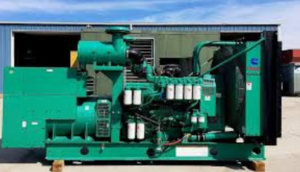Electricity powers our modern world, from lighting up homes to running complex industrial processes. But have you ever wondered how do generators create electricity? This article dives deep into the fascinating process of converting mechanical energy into electrical energy. By the end, you’ll have a clear understanding of how generators work and why they are indispensable to our daily lives.
What Is a Generator?

A generator is a device that converts mechanical energy into electrical energy using the principle of electromagnetic induction. This principle, discovered by Michael Faraday in the 1830s, forms the foundation of modern electrical engineering. Generators are used in various applications, from small portable units for home backup power to massive systems powering industrial operations.
Key Components of a Generator
To understand how generators create electricity, it’s important to know their main components:
Rotor and Stator:
- The rotor is the rotating part of the generator, while the stator is the stationary part.
- These components interact to produce a magnetic field, crucial for generating electricity.
Armature:
- The armature contains the conductors through which the electrical current flows.
Field Windings:
- These are coils of wire that produce a magnetic field when energized.
Prime Mover:
This is the mechanical force that drives the rotor, such as an engine or turbine.
Voltage Regulator:
- This component ensures the generator produces a consistent voltage output.
Cooling and Exhaust Systems:
- Prevents overheating and ensures the generator operates efficiently.
Control Panel:
- The interface that allows users to monitor and control the generator’s functions.
The Science Behind Generators: Electromagnetic Induction
At the heart of a generator’s operation is electromagnetic induction. This process occurs when a conductor moves through a magnetic field, inducing an electric current. Faraday’s Law explains this phenomenon, stating that the induced voltage in a circuit is proportional to the rate of change of the magnetic flux.
In simpler terms, when the rotor spins inside the stator, it creates a changing magnetic field, generating an electric current in the stator’s windings.
Step-by-Step Process of Electricity Generation
Here’s how generators convert mechanical energy into electrical energy:
Mechanical Input:
- The prime mover (e.g., an engine, wind turbine, or water turbine) drives the rotor, converting a primary energy source into rotational motion.
Magnetic Field Creation:
- The rotor contains magnets or is surrounded by field windings. As it spins, it generates a magnetic field.
Electromagnetic Induction:
- The rotor’s motion within the stator’s windings creates a changing magnetic field, inducing an electric current.
Current Collection:
- The induced current is collected by the armature and directed through external circuits for use.
Voltage Regulation:
- The voltage regulator ensures the output voltage remains stable, regardless of load changes.
Distribution:
- The electrical energy is distributed to power grids, homes, or industrial systems.
Types of Generators
Generators come in different types based on their applications and energy sources:
AC Generators (Alternators):
- Produce alternating current (AC), commonly used in homes and businesses.
DC Generators:
- Produce direct current (DC), often used in specific industrial applications.
Portable Generators:
- Small, mobile units ideal for temporary power needs.
Standby Generators:
- Provide backup power during outages, often installed in homes or businesses.
Renewable Energy Generators:
- Include wind turbines, solar generators, and hydroelectric systems that harness renewable resources.
Real-World Examples of Generators
Hydroelectric Power Plants:
- Water flowing through turbines drives massive generators, producing electricity for entire regions.
Wind Farms:
- Wind turbines harness kinetic energy from the wind to generate electricity.
Diesel Generators:
- Frequently used as backup power sources in hospitals, data centers, and remote locations.
Common Questions About Generators
What Makes a Generator Efficient?
Generator efficiency depends on factors like fuel type, load management, and maintenance. High-quality components and a well-designed cooling system also enhance performance.
How Are Generators Different From Motors?
While generators convert mechanical energy into electrical energy, motors do the opposite converting electrical energy into mechanical energy.
What Are the Environmental Impacts of Generators?
Traditional generators powered by fossil fuels emit greenhouse gases. Renewable energy generators, such as wind and solar, offer eco-friendly alternatives.
Actionable Tips for Choosing and Maintaining a Generator
Select the Right Type:
- Choose a generator based on your power needs, whether for home, business, or industrial use.
Regular Maintenance:
- Schedule routine inspections to ensure optimal performance and longevity.
Invest in Renewable Options:
- Consider renewable energy generators to reduce your carbon footprint.
Monitor Fuel Efficiency:
- Use high-quality fuel and avoid overloading the generator to improve efficiency.
Ensure Proper Installation:
- Hire certified professionals to install and maintain your generator.
Conclusion
Generators are vital devices that convert mechanical energy into the electrical energy we depend on daily. By understanding the science and components behind their operation, you can make informed decisions about choosing and maintaining a generator. Whether you’re looking to power your home, business, or a large industrial setup, generators provide a reliable solution for your energy needs.
Harnessing the power of electromagnetic induction, generators continue to be an indispensable part of modern life. If you’re ready to explore more about generators and how they can serve your needs, start today by consulting a trusted energy solutions provider.

